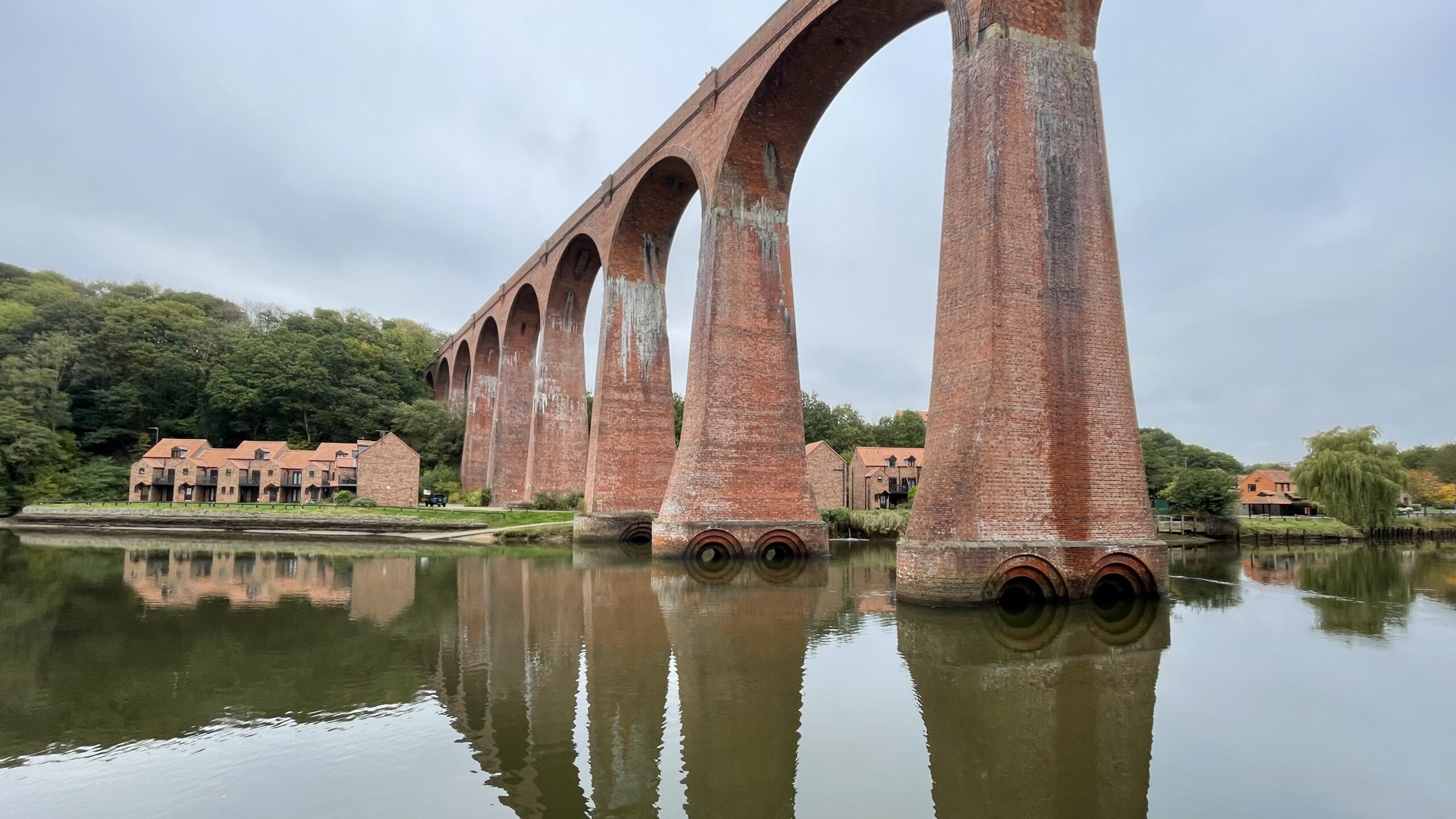Larpool Viaduct at Whitby stands today like a brick-red monument to an age when Victorian railway engineers thought artistically, even as they fought mud, tides, and buried forests. Completed in 1884 to carry the Scarborough and Whitby line across the deep valley of the River Esk, it was built entirely of brick, a deliberate rejection of iron whose corrosion was feared in the salty coastal air. Thirteen arches march across 915 feet of sky, each spanning around 60 feet and rising up to 120 feet above the river—a triumph of nerve and mathematics in equal measure1“Viaduct over the River Esk at Whitby, and the Embankments and Culverts in the Ravines.” Francis Fox (of Westminster), M. Inst. C.E. Proceedings of the Institution of Civil Engineers. Paper No. 2117..
Its construction was an ordeal of ingenuity and brute persistence. Beneath its grace lies a story of men wading through silt, sawing through ancient oak trees buried in the riverbed, and guiding vast brick cylinders—some 20 feet wide—down to the rock below. These cylinders, forming the bases of the piers, were sunk by excavating the material from within, the so-called “Indian system” of brick wells. Divers, working in near blindness, hacked through the submerged timbers with saws and chisels, while above them, steam cranes strained and groaned as if hauling the earth itself into place.
Occasionally, the cylinders would refuse to move for days, gripped by the river’s silt, only to slip several feet without warning, sinking suddenly and silently like a submarine. Once these foundations were finally seated on rock and filled with concrete, the great brick arches were raised in quick succession—eleven of them at once—each seven rings2Courses thick and turned on timber ribs anchored with wire ropes against the relentless coastal wind.
Most striking of all are the paired arched openings cut into the bases of the tallest piers. They were no aesthetic flourish. They lightened the massive brickwork, sparing the foundations from unnecessary burden and they relieved the piers of floodwater pressure by allowing spate and debris to pass through. But, maybe not entirely incidental, they bestowed the structure with that unexpected elegance—a kind of architectural breathing space that turned brute function into quiet beauty.
When the first locomotive crossed in October 1884, not a life had been lost in its making—a rare boast in Victorian engineering. Now silent, save for the gentle whirring of cycles and the tread of walkers, its arches frame the changing light over the Esk, a haunting monument to an age when craftsmanship and endurance built things meant to last forever, and, it seems, largely did.
- 1“Viaduct over the River Esk at Whitby, and the Embankments and Culverts in the Ravines.” Francis Fox (of Westminster), M. Inst. C.E. Proceedings of the Institution of Civil Engineers. Paper No. 2117.
- 2Courses

Leave a Reply